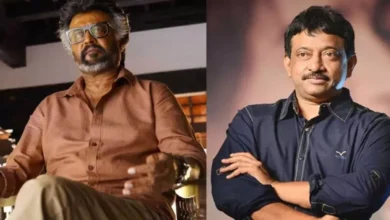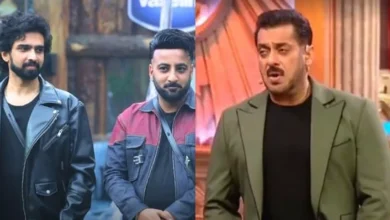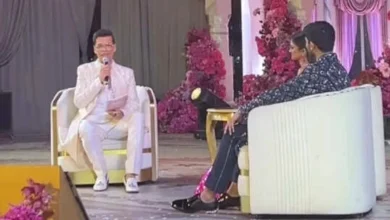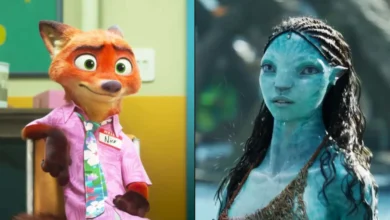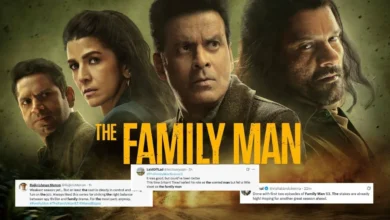90s Television, Doordarshan And Why DD Still Holds A Piece Of Our Heart

At 6 PM every evening, the entire family gathered with a chai ka cup in hand, seated in front of their TV screens. This was a necessary scene in every household of 1993 when Shekhar Suman slipped on the staircase of his Diwan house as Dekh Bhai Dekh ‘s title track collectively played.
It was the magical trance of 90s television that altered our lives. Infact, for every Gen X and millennial, the time holds an integral part of their lives, engraved in their hearts and minds.
So, in case you’re born after the 2000s and have heard stories of curfew-like air across the country when Mahabharat and Ramayan aired on Doordarshan every Sunday, you aren’t mistaken. Weekend mornings were also meant for cartoons with siblings, giving a much deeper and wholesome emotion that can never be replicated.
Pride of 90s television
Our first memory of a TV set was the black-and-white box with a “curtain” that was opened before tuning in. In many houses, there was even a cloth to prevent dust, with a flower vase perfectly kept at the centre – a simple yet strong memory. TV was a symbol of pride and accomplishment. And this was the era of Doordarshan. It all began when a single home with a TV set hosted the entire neighbourhood making it a shared viewing event, until more families started owning it. There came BPL, Onida and Rohini Deluxe. When colour stepped in, we got Weston, Salora, Philips, and Videocon.
When TV was a social gathering
90s TV was a pride. From a screen adorning our drawing rooms to the content it aired, Doordarshan was the mother of all channels. It catered to every viewer, from women, to kids and from grandparents to the working class. Chitrahaar and Rangoli were the only window to new movies. Malgudi Days, Wagle Ki Duniya, Hum Log, Buniyaad, Udaan, and Nukkad dealt with the hardships of the middle-class. Renuka Shahne and Siddharth Kak dug through the pile of fan letters in Surabhi. Infact, Shahane’s short hair, silver jewellery and crisp sarees became a fashion statement. Even before Disney Hour debuted, it was The Jungle Book where Mowgli melted hearts, and so did its title track penned by Gulzar.
Two wholesome channels were enough
Growing up in the 90s was a bliss! Before cable TV became a luxury, we had only two channels at our disposal: Doordarshan and DD Metro. Infact, DD Metro was cable TV’s poor cousin. Yet, the Diwali and New Year specials despite its grainy reception were more heartwarming than the 4K of today. Occasionally, one even needed to adjust the cable antenna to get that signal, everything now part of a glorious past.
So, why does Doordarshan and the television of 90s still hold the crown of nostalgia even after new technology?
Glorious past of 90s content
Agree, DD’s restricted programming and time of broadcast gave us limited choices, but what it offered was quality, against quantity. If Bharat Ek Khoj (The Discovery of India) and The World This Week dealt with history, current affairs, and Indian culture, Captain Vyom, Antariksh and Shaktiman offered sci-fi. Detective serials like Byomkesh Bakshi and Karamchand ruled too. The excitement of live cricket telecast was at par with a sports network. From family dramas to mythology, every genre was tightly packed under the same umbrella of one channel.
Despite limited resources there was no compromise on production quality. Today, banners might be spending mammoth on actors’ fees, but 90s was about strong storytelling and memorable characters, something we lost on the way.
Glueing families in same room
With a smart phone and a tablet in hand, it’s become a rarity to have the entire family under the same roof. But, Doordarshan bound families with shows that created nationwide interest. To say that it shaped a generation won’t be wrong. The programs were more than just entertainment. Makers took their social responsibility seriously, shaping the values and cultural identity. And due to the channel’s widespread accessibility, it was indeed a universal experience that transcended economic divides and connected people across the country.
Ahead of time
When television is blamed for being regressive, the 90s stories were much ahead of times. If Swabhimaan followed a mistress dealing with an inheritance war, Shanti depicted themes like illegitimacy, secrets of the rich societies and revenge. Can we even imagine a show exploring such progressive stories without becoming cringe?
Doorway to films
We must always be thankful to 90s television for introducing Bollywood with some of the gems that found their career path through small screen. If Shah Rukh Khan, Irrfan Khan, Manoj Bajpayee, Ashutosh Rana and Mandira Bedi are some of the biggest examples, we even got filmmakers like Ashutosh Gowariker, Tigmanshu Dhulia, Hansal Mehta and Anurag Basu.
Where the heart lies…
For the 90s kids, who’ve seen the world turn calendar on a new millennium, they also became witness to several global inventions, growth and a modern world, while keeping their foot grounded in the decade they grew up in. There’s advent of social media, OTT platforms and YouTube, but their heart still lies in the era of Doordarshan, when they let the content consume them, instead of consuming content! These shows continue to provide comfort, reminding of a childhood when entertainment was simpler. One mention of, say Shrimaan Shrimati or Tu Tu Main Main is enough to evoke cherished memories of a bygone era and bring a smile.



